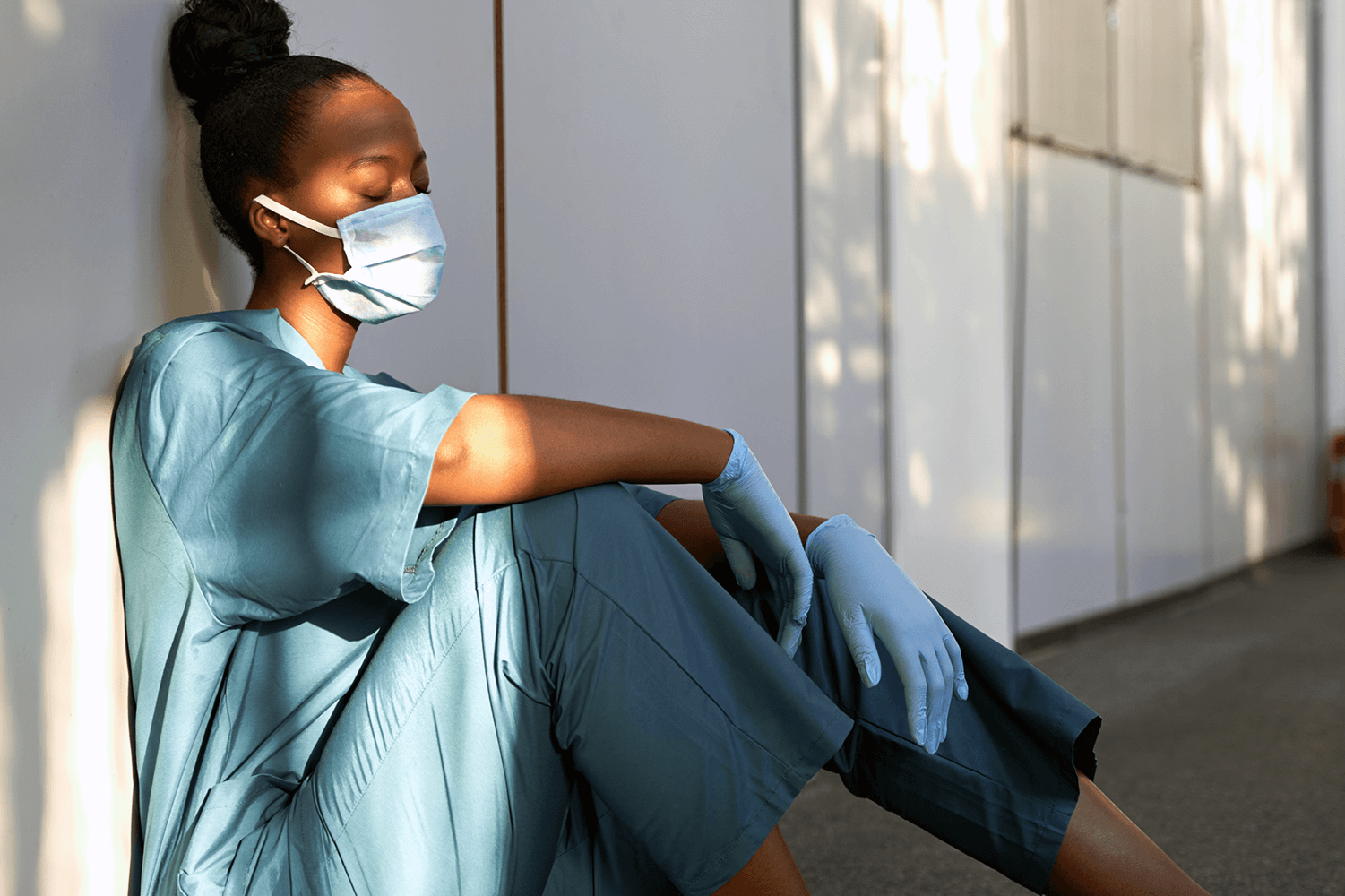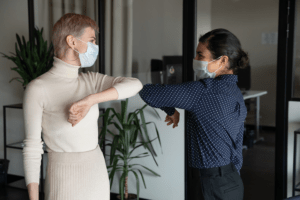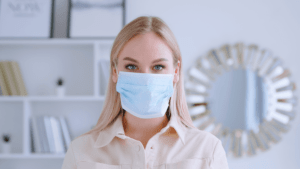8/23/21—There’s no doubt the world is feeling unease due to the recent surge in COVID-19 cases, including the highly contagious Delta variant, but none may be feeling the strain more than hospitals. In the United States many hospitals are facing their highest number of COVID patients since the start of the pandemic, and as seen by the Centers for Disease Control and Prevention’s (CDC) forecasting technology, this may continue for a while. The stress hospitals face affects not only staff and patients, but communities too. Learn how this issue can have a trickledown effect and how you can help lessen the spread of COVID-19 in your community.
According to an analysis by the University of Minnesota’s COVID Hospitalization Tracking Project, 42% of hospitals in the U.S. are considered under “high” or “extreme” stress. This metric is based on the ratio of hospital beds to COVID-19 patients, with a concerning 30% or more of ICU beds and COVID-19 patients indicating “extreme stress.” It’s clear with these numbers that hospitals are facing unprecedented amounts of admitted COVID cases, with a majority of cases being found in unvaccinated patients according to numerous studies, including one conducted by the Kaiser Family Foundation (KFF).
Hospital strain during this surge has had a myriad of effects. Staff mental health and well-being has taken a hit as they work longer hours, exposed to highly contagious variants, while witnessing COVID-related deaths regularly. According to a study by the U.S. Department of Health and Human Services (HHS), hospitals reported that increased hours and job duties left staff exhausted, mentally fatigued, and experiencing post-traumatic stress disorder (PTSD). Added to the stress is a divided public, who either refuse vaccination or believe the entire pandemic to be fake entirely.
“It’s really difficult for staff to see so many deaths—and to know there are people in our community who are having superspreading events and parties, or having protests about masking and saying the virus is a hoax,” said Chief Nursing Officer at LAC+USC Medical Center Nancy Blake, in a recent article from the Scientific American. “It’s just really demoralizing.”
Another side effect of the current strain is the inability of hospitals to not only accept new COVID patients, but resume care for patients suffering other ailments, like cancer or other ongoing illnesses. According to HHS, hospitals are seeing patients have delayed or forgone routine health care, leading to worsening patient conditions. Administrators predict that widespread delayed care could result in higher hospitalization rates and need for more complex hospital care in the future. Hospitals are also needing to pause elective surgeries to consolidate staff and provide more patient care needed in their ICUs.
Mental stress and fatigue alone have led to many medical professionals leaving the workforce, but with the pushback of elective surgeries, hospitals are also seeing job losses. As noted in an article from the National Center for Biotechnology (NCBI), “anecdotal and news report evidence suggests that some private anesthesia groups in the country have experienced financial distress, resulting in furloughs and layoffs because they depend heavily on providing services for routine, elective surgeries, which have been canceled or delayed in a number of states.”
The rearranging of critical hospital care, and routine care systems, has led to financial instability within hospitals as well. According to HHS, hospitals are experiencing financial issues due to cost increases related to COVID cases, and lower revenue from the decrease in other hospital services, which have been temporarily stopped due to COVID patient intake.
As hospitals fight rapidly rising COVID cases, communities don’t have to sit by helpless. There are many things you can do to help mitigate the spread of COVID in your area, and in turn fight additional strain placed on your local medical resources.
Vaccination is the key preventative measure to ensure not only your protection, but that of your community. The majority of hospitalizations currently are unvaccinated individuals, and as vaccination numbers rise, hospitals hope to find some relief.
Other preventative measures are protective face coverings when out in public, even in outdoor spaces with a lot of people. The CDC recommends these measures for both vaccinated and unvaccinated individuals, along with maintaining 6-foot social distancing, utilizing contact tracing with programs like AlertTrace, good handwashing hygiene and monitoring your health. Get tested for COVID as needed, for both vaccinated and unvaccinated individuals. If you were recently exposed to someone who tested positive, feel you were possibly exposed, or exhibit symptoms of illness, contact your local health department to schedule a test.
Contact tracing has remains a key element in alleviating spread, as recommended by the CDC. Contact tracing provided by AlertTrace can help eliminate worry when a positive COVID case is detected in your organization. AlertTrace provides you with reliable and private data fast, helping you can contain spread, notify close contacts and keep your company safe.
…
“Covid-19 Forecasts: Hospitalizations.” Centers for Disease Control and Prevention, Centers for Disease Control and Prevention, www.cdc.gov/coronavirus/2019-ncov/science/forecasting/hospitalizations-forecasts.html.
“COVID-19 Hospitalization Tracking Project.” Carlson School of Management, carlsonschool.umn.edu/mili-misrc-covid19-tracking-project.
“Covid-19 Vaccine Breakthrough Cases: Data from the States.” KFF, 20 Aug. 2021, www.kff.org/policy-watch/covid-19-vaccine-breakthrough-cases-data-from-the-states/.
“Hospitals Reported That the COVID-19 Pandemic Has Significantly Strained Health Care Delivery”, oig.hhs.gov/oei/reports/OEI-09-21-00140.pdf.
Harmon, Katherine. “COVID-Overwhelmed Hospitals Strain Staff and Hope to Avoid Rationing Care.” Scientific American, 21 Jan. 2021, www.scientificamerican.com/article/covid-overwhelmed-hospitals-strain-staff-and-hope-to-avoid-rationing-care1/.
Eriksson, Carl O, et al. “The Association between Hospital Capacity Strain and INPATIENT Outcomes in Highly Developed Countries: A Systematic Review.” Journal of General Internal Medicine, Springer US, June 2017, www.ncbi.nlm.nih.gov/pmc/articles/PMC5442002/.
“How to Protect Yourself & Others.” Centers for Disease Control and Prevention, Centers for Disease Control and Prevention, www.cdc.gov/coronavirus/2019-ncov/prevent-getting-sick/prevention.html.




